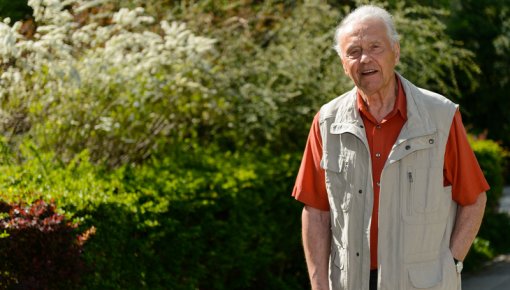Aziz Z, Cullum N. Electromagnetic therapy for treating venous leg ulcers. Cochrane Database Syst Rev 2015; (7): CD002933.
Broderick C, Pagnamenta F, Forster R. Dressings and topical agents for arterial leg ulcers. Cochrane Database Syst Rev 2020; (1): CD001836.
Chen J, Wan Y, Lin Y et al. Platelet-rich fibrin and concentrated growth factors as novel platelet concentrates for chronic hard-to-heal skin ulcers: a systematic review and Meta-analysis of randomized controlled trials. J Dermatolog Treat 2022; 33(2): 613-621.
Cullum N, Liu Z. Therapeutic ultrasound for venous leg ulcers. Cochrane Database Syst Rev 2017; (5): CD001180.
Deutsche Gesellschaft für Wundheilung und Wundbehandlung (DGfW). S3-Leitlinie Lokaltherapie schwerheilender und/oder chronischer Wunden aufgrund von peripherer arterieller Verschlusskrankheit, Diabetes Mellitus oder chronischer venöser Insuffizienz. AWMF register no.: 091-001. 2023.
Eriksson E, Liu PY, Schultz GS et al. Chronic wounds: Treatment consensus. Wound Repair Regen 2022; 30(2): 156-171.
Gethin G, Cowman S, Kolbach DN. Debridement for venous leg ulcers. Cochrane Database Syst Rev 2015; (9): CD008599.
Greene E, Avsar P, Moore Z et al. What is the effect of larval therapy on the debridement of venous leg ulcers? A systematic review. J Tissue Viability 2021; 30(3): 301-309.
Institute for Quality and Efficiency in Health Care (IQWiG, Germany). Hyperbaric oxygen therapy for diabetic foot syndrome: Final report; Commission N15-02. 2016.
Institute for Quality and Efficiency in Health Care (IQWiG, Germany). Negative pressure wound therapy for wounds healing by primary intention: Final report; Commission N17-01B. 2019.
Institute for Quality and Efficiency in Health Care (IQWiG, Germany). Negative pressure wound therapy for wounds healing by secondary intention: Final report; Commission N17-01A. 2019.
Jull AB, Cullum N, Dumville JC et al. Honey as a topical treatment for wounds. Cochrane Database Syst Rev 2015; (3): CD005083.
Lee Y, Lee MH, Phillips SA et al. Growth factors for treating chronic venous leg ulcers: A systematic review and meta-analysis. Wound Repair Regen 2022; 30(1): 117-125.
Liu Z, Dumville JC, Hinchliffe RJ et al. Negative pressure wound therapy for treating foot wounds in people with diabetes mellitus. Cochrane Database Syst Rev 2018; (10): CD010318.
McLain NE, Moore ZE, Avsar P. Wound cleansing for treating venous leg ulcers. Cochrane Database Syst Rev 2021; (3): CD011675.
Moreira Da Cruz D, Oliveira-Pinto J, Mansilha A. The role of hyperbaric oxygen therapy in the treatment of diabetic foot ulcers: a systematic review with meta-analysis of randomized controlled trials on limb amputation and ulcer healing. Int Angiol 2021; 41(1): 63-73.
Norman G, Westby MJ, Rithalia AD et al. Dressings and topical agents for treating venous leg ulcers. Cochrane Database Syst Rev 2018; (6): CD012583.
Qu W, Wang Z, Hunt C et al. The Effectiveness and Safety of Platelet-Rich Plasma for Chronic Wounds: A Systematic Review and Meta-analysis. Mayo Clin Proc 2021; 96(9): 2407-2417.
Santema TB, Poyck PP, Ubbink DT. Skin grafting and tissue replacement for treating foot ulcers in people with diabetes. Cochrane Database Syst Rev 2016; (2): CD011255.
Shi C, Dumville JC, Cullum N et al. Compression bandages or stockings versus no compression for treating venous leg ulcers. Cochrane Database Syst Rev 2021; (7): CD013397.
Snyder D, Sullivan N, Margolis D et al. Skin Substitutes for Treating Chronic Wounds. (AHRQ Technology Assessments). 2020.
Tang Y, Chen L, Ran X. Efficacy and Safety of Honey Dressings in the Management of Chronic Wounds: An Updated Systematic Review and Meta-Analysis. Nutrients 2024; 16(15): 2455.
Zens Y, Barth M, Bucher HC et al. Negative pressure wound therapy in patients with wounds healing by secondary intention: a systematic review and meta-analysis of randomised controlled trials. Systematic Reviews 2020; 9(1): 238.
IQWiG health information is written with the aim of helping people understand the advantages and disadvantages of the main treatment options and health care services.
Because IQWiG is a German institute, some of the information provided here is specific to the German health care system. The suitability of any of the described options in an individual case can be determined by talking to a doctor. informedhealth.org can provide support for talks with doctors and other medical professionals, but cannot replace them. We do not offer individual consultations.
Our information is based on the results of good-quality studies. It is written by a team of health care professionals, scientists and editors, and reviewed by external experts. You can find a detailed description of how our health information is produced and updated in our methods.

